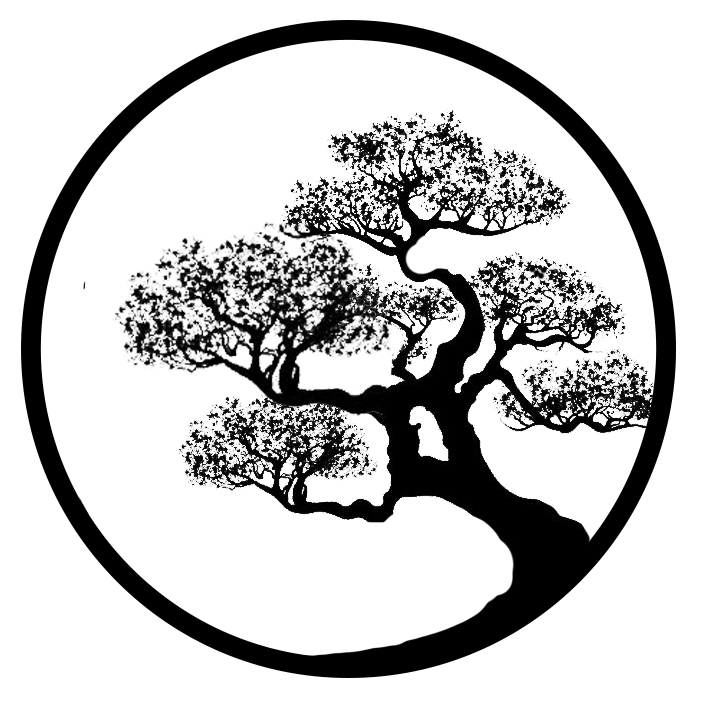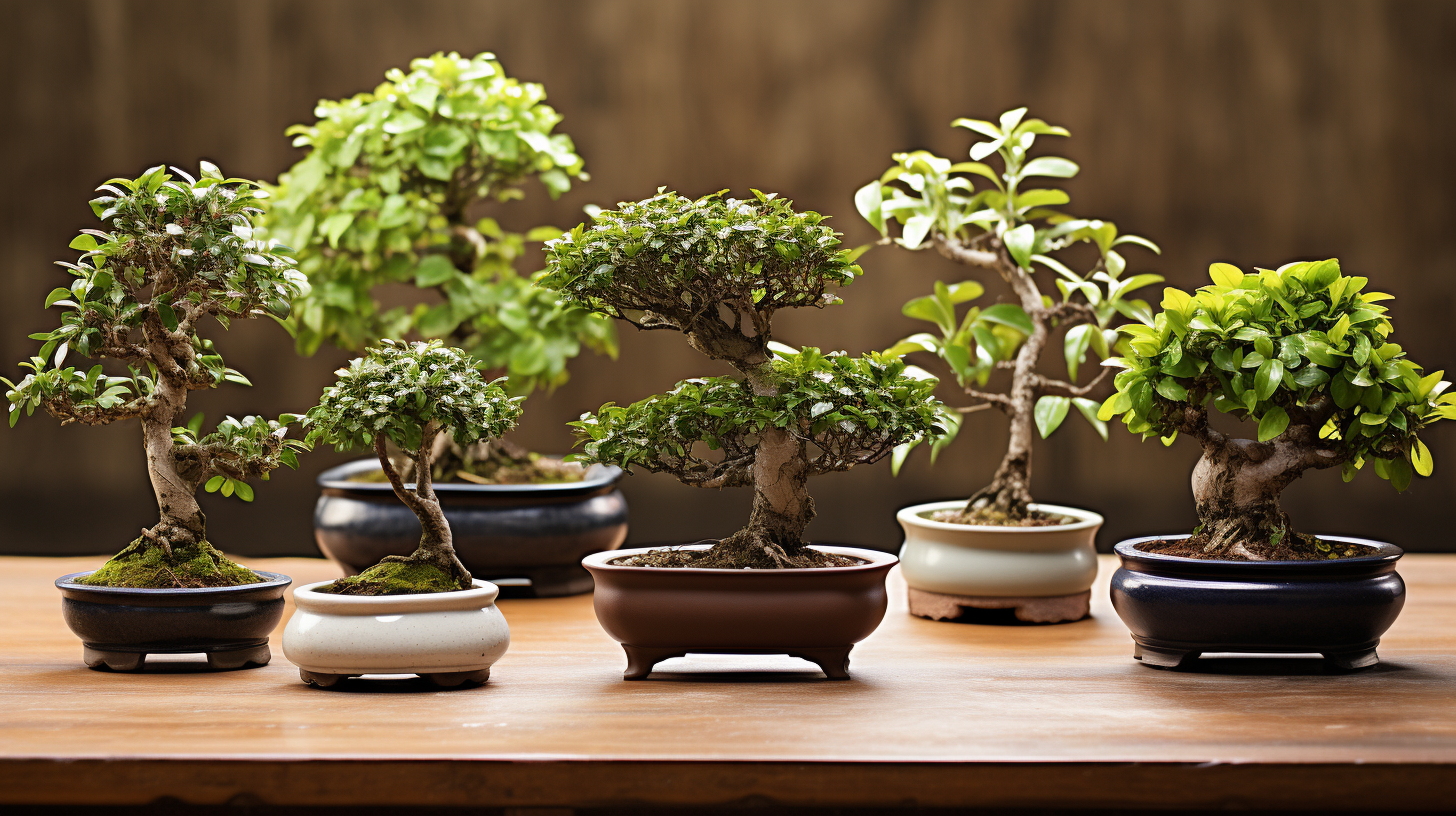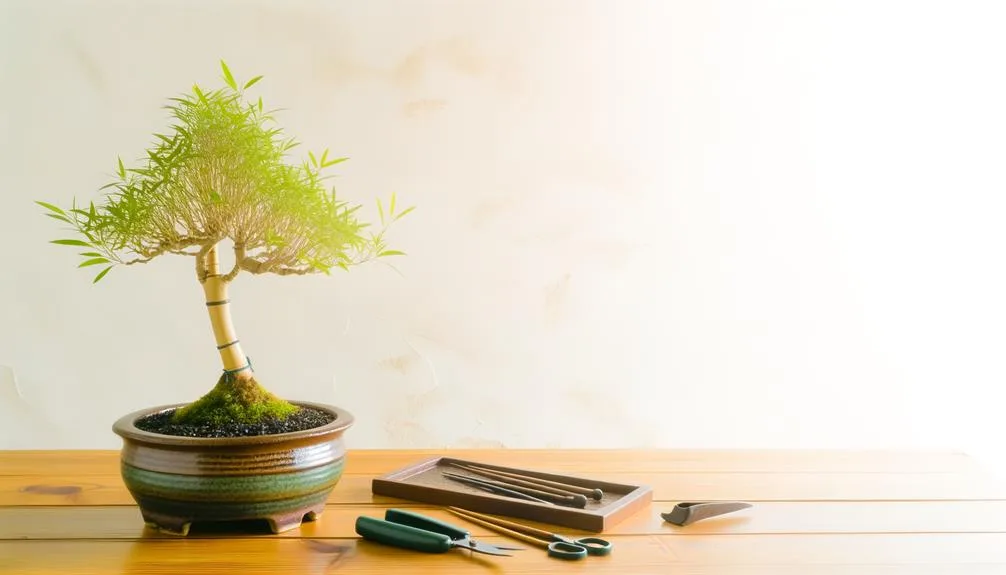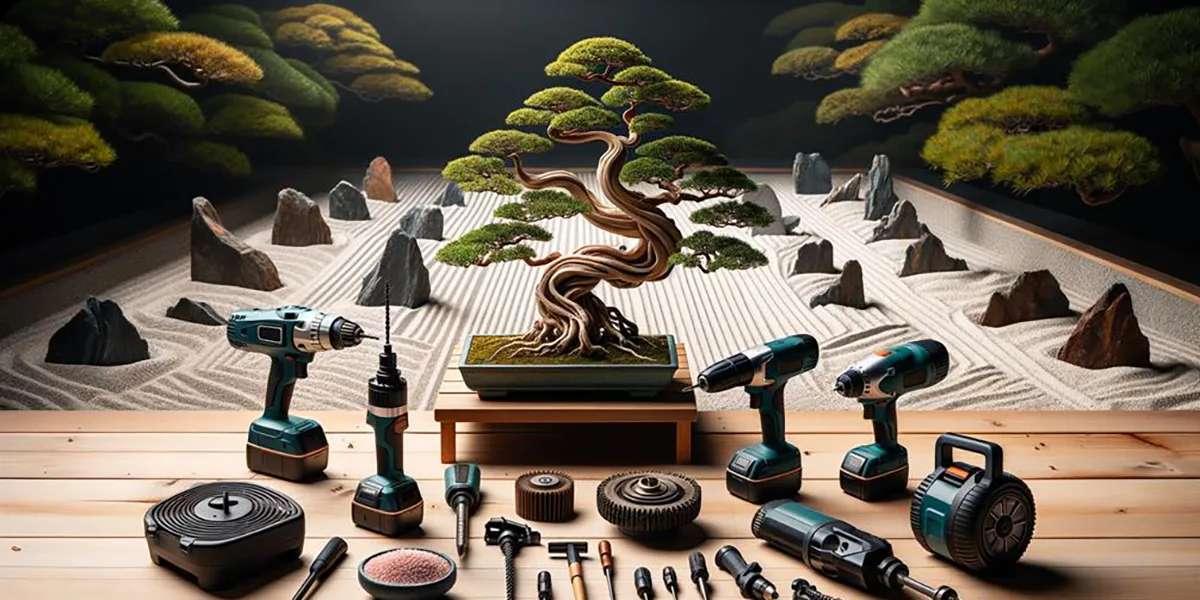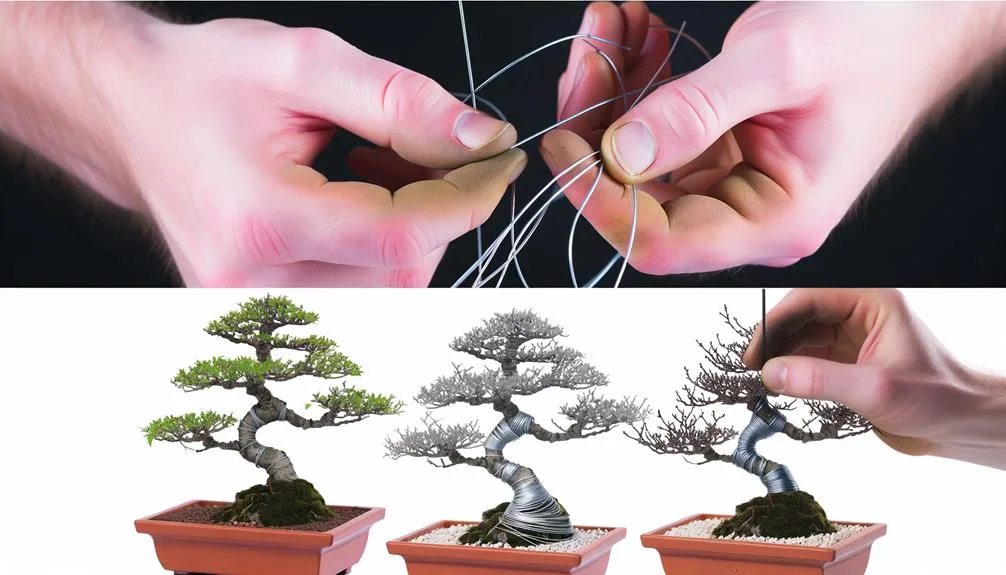Looking to bring nature indoors? Did you know that over 35 million households in the United States alone have at least one indoor plant?
Bonsai trees are a unique and captivating way to add a touch of greenery to your living space. When it comes to indoor bonsai species, there are several excellent options to consider.
From the resilient Ficus Retusa to the elegant Chinese Elm, these trees offer a beautiful and calming presence within your home. With proper care and attention, these top bonsai tree species can thrive in indoor settings, bringing a little piece of the outdoors inside for you to enjoy.
Key Takeaways
- Ficus Retusa and Chinese Elm are adaptable and resilient bonsai trees suitable for indoor settings.
- Jade Plant is a popular choice for low-maintenance bonsai due to its tolerance of low light and infrequent watering.
- Fukien Tea is a unique and visually striking bonsai tree that is adaptable to indoor conditions and easy to shape and style.
- Hawaiian Umbrella Tree is an elegant and low-maintenance option for indoor bonsai, thriving in low-light conditions and having a natural umbrella-like growth pattern.
Ficus Retusa
When selecting a bonsai tree for indoor settings, consider using Ficus Retusa for its adaptability and resilience. This species, also known as the Chinese Banyan, is an ideal choice for beginners due to its forgiving nature.
Ficus Retusa thrives in moderate indoor lighting and is tolerant of occasional missed waterings. Its glossy, dark green leaves and smooth grey bark create a striking visual appeal. With proper care, this bonsai can develop aerial roots and a well-defined trunk.
Additionally, its small, round leaves and ability to withstand pruning make it an excellent candidate for shaping and styling.
Chinese Elm
Consider the Chinese Elm as a versatile and resilient option for your indoor bonsai collection. This species is known for its adaptability to various light conditions and its ability to withstand occasional neglect. Here’s why the Chinese Elm is an excellent choice for your indoor bonsai garden:
- Beautiful Form: The Chinese Elm’s naturally elegant and twisted trunk makes for a visually striking bonsai.
- Small Leaves: It features small, glossy green leaves that reduce in size with proper pruning, adding to its aesthetic appeal.
- Tolerant of Indoor Conditions: This species can thrive indoors, making it a convenient choice for bonsai enthusiasts who prefer indoor settings.
- Easy to Style: The Chinese Elm responds well to wiring and shaping, allowing you to create unique and artistic designs.
Jade Plant
With its distinctive succulent leaves and easy-care nature, the Jade Plant is a popular choice for indoor bonsai enthusiasts seeking low-maintenance yet visually appealing options. This sturdy and resilient plant is known for its fleshy, oval-shaped leaves and woody stems, making it an excellent choice for bonsai cultivation. The Jade Plant, also known as Crassula ovata, is native to South Africa and is well-suited for indoor environments. Its ability to tolerate low light and infrequent watering makes it an ideal choice for beginners. Below is a table highlighting key characteristics of the Jade Plant:
| Characteristic | Description |
|---|---|
| Watering Needs | Infrequent, drought-tolerant |
| Light Requirements | Low to medium light |
| Growth Rate | Slow |
| Maintenance Level | Low |
| Ideal Temperature | 65-75°F (18-24°C) |
The Jade Plant’s adaptability and striking appearance make it a fantastic addition to any indoor bonsai collection.
Fukien Tea
Fukien Tea, a popular choice for indoor bonsai enthusiasts, offers a unique and visually striking addition to your collection. Here’s why it’s a great option:
The Fukien Tea plant is renowned not only for its aesthetic appeal but also for its resilience and versatility, making it a perfect choice for both beginner and experienced bonsai growers. Its tiny, dark green leaves, white blossoms, and red berries provide a year-round display of color, and its textured gray bark adds an extra touch of character.
This plant is also known for its ability to adapt to a variety of conditions, demonstrating a level of durability not always found in other bonsai species. Whether you’re just starting your bonsai journey or looking to diversify your existing collection, the Fukien Tea plant offers a unique blend of beauty and hardiness that is sure to make it a standout addition. Here’s why it’s a great option:
- Small, Shiny Leaves: The Fukien Tea tree’s small, glossy leaves create a delightful contrast against its gnarled trunk, adding visual interest to any indoor space.
- White, Star-Shaped Flowers: When in bloom, this bonsai produces tiny, star-shaped white flowers that emit a sweet fragrance, enhancing the ambiance of your living area.
- Year-Round Interest: With its ability to produce flowers and small red berries throughout the year, the Fukien Tea bonsai ensures a constant display of color and texture.
- Easily Trained: Its flexible branches and small, dense foliage make it easy to shape and style, allowing you to create the bonsai tree of your dreams with minimal effort.
Hawaiian Umbrella Tree
When you’re choosing a bonsai tree for your indoor space, the Hawaiian Umbrella Tree offers an elegant and low-maintenance option. This tropical tree, also known as Schefflera arboricola, features small, glossy green leaves and can thrive in low-light conditions, making it perfect for indoor settings.
Its natural umbrella-like growth pattern gives it a unique and attractive appearance, adding a touch of exotic beauty to your space. The Hawaiian Umbrella Tree is adaptable and easy to care for, making it an excellent choice for beginners. With proper pruning and occasional watering, this bonsai tree can flourish indoors for many years.
Its resilience and striking aesthetic make it a popular choice for those looking to bring a little piece of the tropics into their homes.
Serissa Japonica
Selecting Serissa Japonica for your indoor bonsai collection brings a touch of elegance and charm to your living space. This delicate and beautiful species is perfect for beginners and experienced enthusiasts alike. Here’s why Serissa Japonica is a great choice for your indoor bonsai collection:
- Tiny White Flowers: Serissa Japonica blooms delicate white flowers that add a touch of beauty to your indoor setting.
- Small Leaves: The tiny, bright green leaves create a lush and refined appearance, perfect for indoor settings.
- Tolerant of Pruning: This species responds well to pruning and shaping, allowing you to create the bonsai style you desire.
- Indoor Adaptability: Serissa Japonica thrives in indoor environments, making it an ideal choice for your home or office.
Frequently Asked Questions
How Often Should I Water My Indoor Bonsai Tree?
You should water your indoor bonsai tree whenever the topsoil begins to feel dry to the touch. Stick to a consistent schedule, but adjust as needed based on the specific needs of your tree.
What Are Some Common Pests and Diseases That Indoor Bonsai Trees Are Susceptible To?
Dealing with indoor bonsai tree pests and diseases can be a hassle. Keep an eye out for common issues like aphids, spider mites, and root rot. Regularly inspecting your bonsai can help prevent problems from taking root.
Can I Use Regular Potting Soil for My Indoor Bonsai Tree, or Do I Need a Special Bonsai Soil Mix?
Are There Any Specific Pruning Techniques I Should Use for These Indoor Bonsai Tree Species?
When pruning indoor bonsai, aim for balance and proportion. Regularly remove dead or overgrown branches to maintain the tree’s shape and health. Use sharp, clean tools and make precise cuts to promote new growth.
Can I Display My Indoor Bonsai Tree Near a Window With Direct Sunlight, or Should It Be Placed in a More Shaded Area?
You can display your indoor bonsai near a window with direct sunlight, but be cautious of scorching the leaves. Consider rotating the tree to ensure even growth. Alternatively, you can place it in a more shaded area to prevent sunburn.
